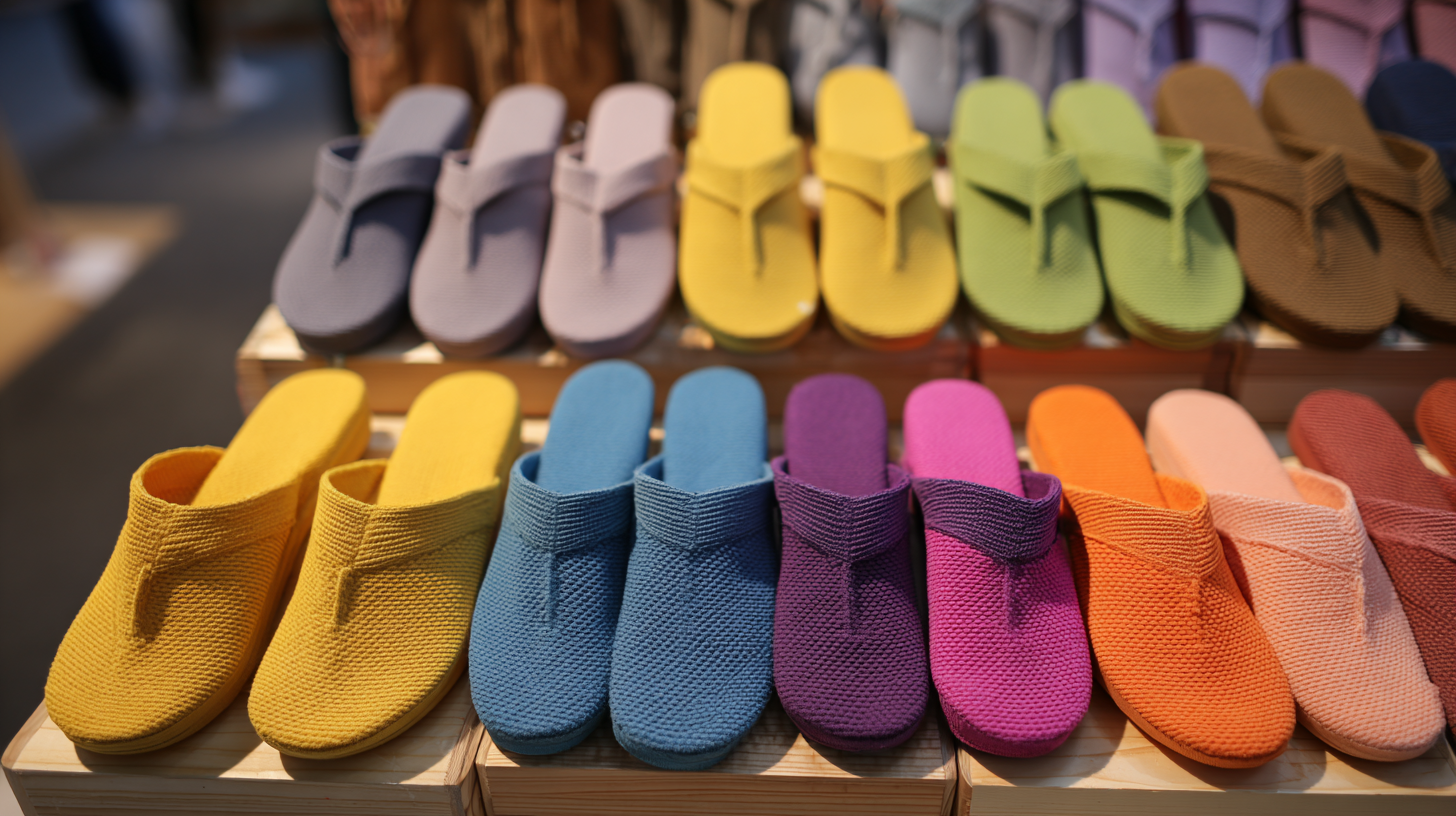
Leave Your Message
-
lwl2103
-

 As the global fitness industry continues to expand, the market for Non Slip Yoga Socks is witnessing significant growth, particularly highlighted during events such as the 138th China Import and Export Fair in 2025. According to a report by ResearchAndMarkets, the global yoga accessories market is projected to reach USD 12.51 billion by 2026, with non-slip yoga socks representing a key segment driven by rising consumer awareness of health and fitness. The demand for these specialized socks is largely fueled by the increasing popularity of yoga practices, which have seen a 14% annual growth rate in participation, as reported by the Yoga Alliance. At the upcoming fair, stakeholders will have the opportunity to explore the latest trends, innovations, and consumer preferences shaping the Non Slip Yoga Socks market, providing valuable insights for manufacturers, retailers, and investors looking to capitalize on this burgeoning niche.
As the global fitness industry continues to expand, the market for Non Slip Yoga Socks is witnessing significant growth, particularly highlighted during events such as the 138th China Import and Export Fair in 2025. According to a report by ResearchAndMarkets, the global yoga accessories market is projected to reach USD 12.51 billion by 2026, with non-slip yoga socks representing a key segment driven by rising consumer awareness of health and fitness. The demand for these specialized socks is largely fueled by the increasing popularity of yoga practices, which have seen a 14% annual growth rate in participation, as reported by the Yoga Alliance. At the upcoming fair, stakeholders will have the opportunity to explore the latest trends, innovations, and consumer preferences shaping the Non Slip Yoga Socks market, providing valuable insights for manufacturers, retailers, and investors looking to capitalize on this burgeoning niche.
The market for non-slip yoga socks in China is poised for significant growth, driven by the increasing popularity of fitness and wellness activities among consumers. According to a recent industry report, the global socks market was valued at approximately US$60.1 billion in 2023 and is projected to achieve US$95.1 billion by 2030, indicating a robust compound annual growth rate (CAGR) of 6.8% from 2023 onwards. Specifically, the segment for hiker and yoga socks is expected to reach a value of US$1,834.2 million by 2032, reflecting the rising trend towards fitness-centric lifestyles.
This growing demand for specialized socks is indicative of a broader shift in consumer behavior, where functional and stylish fitness apparel is becoming a priority. The fitness industry in China, alongside other wellness trends, has catalyzed an increasing interest in yoga and related activities, thus boosting the market for non-slip yoga socks. As health-conscious consumers continue to seek products that enhance their exercise experience, companies that can effectively tap into this niche will likely benefit from the unfolding opportunities in the market.

The competitive landscape of non-slip yoga socks producers is evolving rapidly, driven by changing consumer preferences and innovative product designs. As yoga gains popularity in China, manufacturers are increasingly focusing on sustainability and functionality. Companies are introducing eco-friendly materials and advanced grip technology to enhance the performance of their socks, appealing to a more environmentally conscious demographic. This shift presents both opportunities and challenges, as businesses strive to differentiate themselves in a crowded marketplace.
Moreover, collaborations and partnerships are becoming common among producers to leverage shared expertise and expand market reach. Some brands are seeking affiliations with yoga studios and wellness influencers to promote their products directly to consumers. In addition, the digital transformation is reshaping marketing strategies, with online platforms playing a crucial role in reaching target audiences. The emphasis on social media marketing and e-commerce is expected to intensify, allowing companies to build strong brand identities and foster customer loyalty. This emerging trend highlights the need for producers to stay agile and adapt to the dynamic market environment.
| Producer Type | Market Share (%) | Production Volume (Units) | Average Price (USD) | Growth Rate (2022-2025) (%) |
|---|---|---|---|---|
| Domestic Manufacturers | 35 | 500,000 | 10.00 | 8 |
| International Brands | 45 | 750,000 | 15.00 | 5 |
| Online Retailers | 20 | 300,000 | 12.00 | 10 |
| Startups | 10 | 150,000 | 8.00 | 15 |
The market for non-slip yoga socks is witnessing transformative shifts, primarily driven by evolving consumer preferences that emphasize quality, durability, and functionality. As yoga and wellness continue to gain traction globally, consumers have become increasingly discerning, valuing products that enhance their overall practice. Recent trends indicate that a growing number of individuals are prioritizing gear that not only improves performance but also offers comfort and support during workouts. This shift in consumer behavior is evident in the significant sales growth experienced by wellness startups following positive endorsements and funding, highlighting the potential for yoga sock brands to capture a larger market share.
Additionally, the broader socks market is set for substantial expansion, with innovations in material and design catering to the specific needs of yoga enthusiasts. As health and wellness trends accelerate, the adoption of specialized products like non-slip yoga socks is on the rise. Increasingly, consumers are gravitating toward items that promise enhanced grip and stability, reflecting a broader trend in fitness gear focusing on functionality over price. As this market evolves leading up to 2025 and beyond, understanding and meeting these consumer expectations will be crucial for brands looking to thrive in this dynamic landscape.
The trade policies governing the import and export of non-slip yoga socks will significantly shape market trends by 2025, particularly as countries reassess their economic strategies in response to global shifts. According to a report by Market Research Future, the global market for yoga attire, including non-slip yoga socks, is projected to reach approximately $66 billion by 2025, with an annual growth rate of around 5.5%. This growth trajectory underscores the increasing popularity of yoga as a fitness regimen, which is closely intertwined with consumer demand for specialized apparel.
As China continues to play a pivotal role in manufacturing and exporting textile products, any changes in trade policies will directly impact non-slip yoga sock supply chains. A study by the World Trade Organization indicates that protective tariffs on textile imports could increase production costs for countries reliant on Chinese imports. Conversely, more favorable trade agreements may facilitate lower prices and higher availability for consumers. For instance, findings from Statista reveal that the import volume of non-slip yoga socks into the U.S. rose by 15% in 2022, suggesting that any favorable regulations could further bolster this upward trend, positioning non-slip yoga socks as essential items in the growing wellness market.

Sustainable practices in the production of non-slip yoga socks are increasingly becoming a focal point for manufacturers as market demand grows. The current consumer trend emphasizes eco-friendliness, prompting producers to seek materials that minimize environmental impact. Organic cotton, recycled polyester, and biodegradable elastane are among the materials gaining popularity. These alternatives ensure that the production process aligns with sustainable values while providing comfort and functionality to users.
Furthermore, many brands are adopting eco-conscious manufacturing processes that reduce water usage and carbon emissions. Implementing energy-efficient techniques and waste reduction strategies not only enhances product appeal but also resonates with a more environmentally aware audience. As international markets, particularly in China, tighten regulations on environmental practices, companies that prioritize sustainability in their production methods will likely have a competitive edge at the 2025 China Import and Export Fair. This trend signifies a shift towards a more responsible approach in the textile industry, which can ultimately lead to greater consumer loyalty and brand strength.
This chart illustrates the projected market trends for non-slip yoga socks in terms of sustainability practices and their impact on consumer preferences from 2023 to 2025. The data reflects an increasing consumer interest in sustainable products, as represented by the growing percentage of consumers prioritizing eco-friendly options in their purchase decisions.






